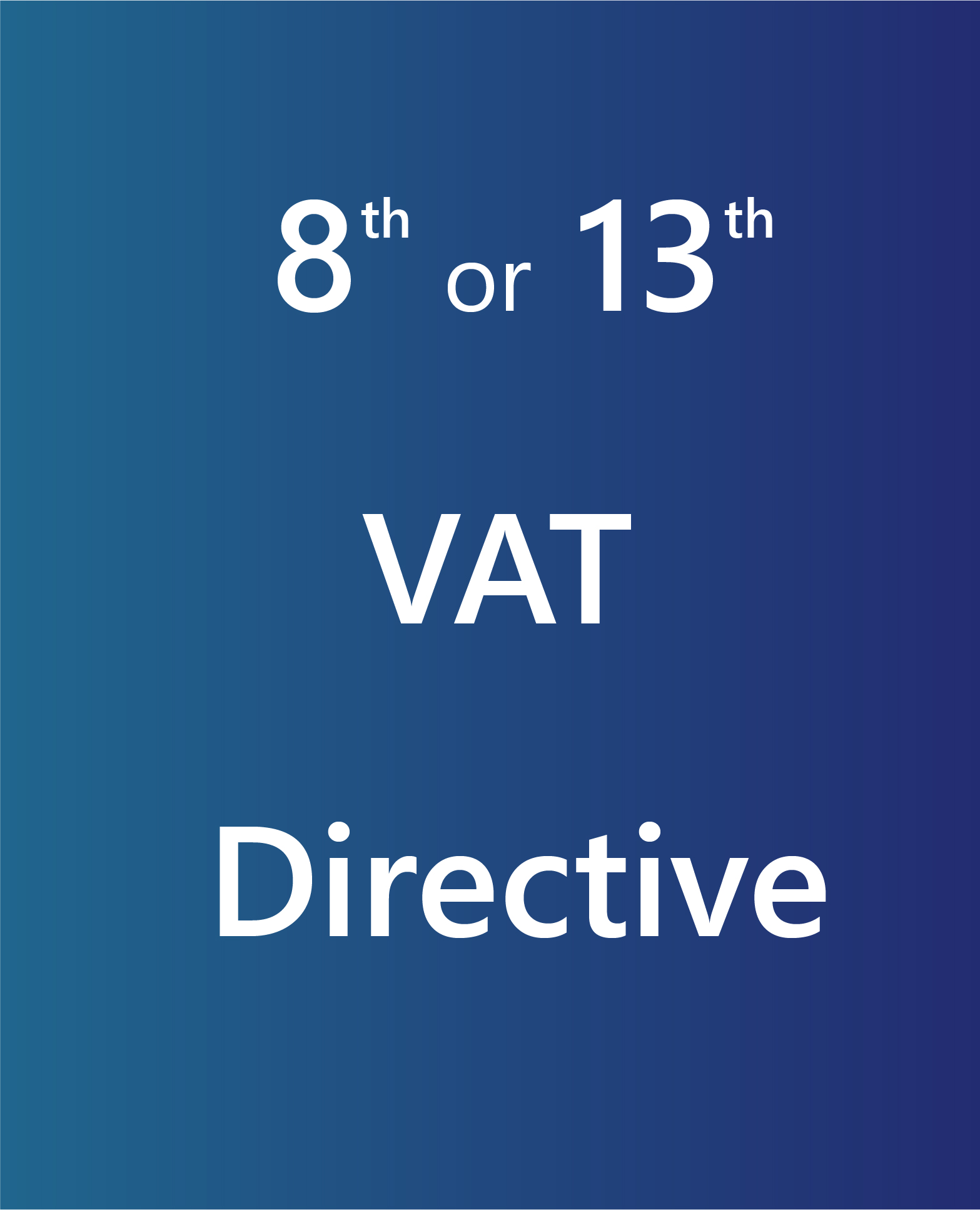The European Directives for Value Added Tax (VAT) Refunds
The European Directives for Value Added Tax (VAT) Refunds
 Depending on your country of business, regulations, process and requirements for VAT refund claims vary. Either directive 2008/09/EC, former 8th directive or directive 86/560/EEC, also known as the 13th directive, will apply to your company. In this article, we look at which directive would apply to your company and details about each directive.
Depending on your country of business, regulations, process and requirements for VAT refund claims vary. Either directive 2008/09/EC, former 8th directive or directive 86/560/EEC, also known as the 13th directive, will apply to your company. In this article, we look at which directive would apply to your company and details about each directive.
Refund to EU Businesses (Directive 2008/09/EC, former 8th Directive)
Foreign VAT refunds to EU companies are based on the provisions stated in the Council Directive 2008/9/EC. The directive lays down detailed rules for the refund of VAT, provided for in the principal VAT Directive 2006/112/EC, to taxable persons not established in the Member State of Refund but established in another Member State. The previous 8th Directive was replaced by the Directive 2008/9/EC on January 1, 2010.
Taxable persons established in other EU Member States are entitled to reclaim their input VAT by submitting an application to the EU Member State of Refund through an electronic portal provided by their own tax authority; the Member State of Establishment.
Electronic applications should be submitted within 9 months from the end of the calendar year to which the refund period relates. For example, applications for the calendar year 2017 should be submitted at the latest on September 30, 2018.
In order to qualify for a refund under these directives, the foreign business during the same claim period must NOT:
- be VAT registered or required to register for VAT in the refunding EU Member State
- have supplied goods or services in the country where they incurred the VAT but with the following exceptions to the rule:
- exempted transport & ancillary services (Articles 144, 146, 148, 149, 151, 153, 159 or 160 in Directive 2006/112/EC) or
- supplies to customers liable for payment of the related VAT under the reverse-charge mechanism (Articles 194-197 or 199 in Directive 2006/112/EC).
The tax authority in the Member State of Establishment will not forward the claim to the Member State of Refund if the claimant:
- is not a taxable person for VAT purposes.
- only makes exempt supplies without right of deduction.
- is covered by the special scheme for small businesses.
- is covered by the flat-rate scheme for farmers.
Links
Principal VAT Directive 2006/112/EC Click Here.
Council Directive 2008/9/EC Click Here.
Refund to Non-EU Businesses (Directive 86/560/EEC also known as the 13th Directive)
Refund to foreign businesses is based on the rules laid down in the Council Directive 86/560/EEC on the harmonisation of the laws of the Member States relating to turnover taxes making arrangements for the refund of VAT to taxable persons not established in the European Union.
Non-EU businesses are entitled to claim their input VAT by submitting an application according to the specific rules of the EU Member State concerned. Each EU Member State of Refund requires that the claims are submitted using their country specific form. Most tax authorities in the Member States of Refund require that the original paper invoices are enclosed with the application or alternatively sent upon request shortly thereafter.
Applications for VAT refunds must be made within 6 or 9 months (depending on the country of refund) from the end of the calendar year to which the refund period relates.
To qualify for a refund under this procedure, Article 1 of Directive 86/560/EEC stipulates that during the refund period the foreign business must NOT have:
- been established in any EU Member State or territory or
- been VAT registered or required to register for VAT in the refunding EU Member State or
- supplied goods or services in the country where they incurred the VAT but with the following exceptions to the rule:
- exempted transport & ancillary services (Articles 144, 146, 148, 149, 151, 153, 159 or 160 in Directive 2006/112/EC) or
- supplies to customers liable for payment of the related VAT under the reverse-charge mechanism (Articles 194-197 or 199 in Directive 2006/112/EC).
An EU Member State may:
- refuse to refund VAT to those claimants established in a country which does not grant reciprocal refund rights to their businesses for VAT (or similar taxes).
- impose restrictions on the type of expenditures qualifying for refunds.
- insist that the claimant appoints a tax representative.
Links
Council Directive 86/560/EEC Click Here.
